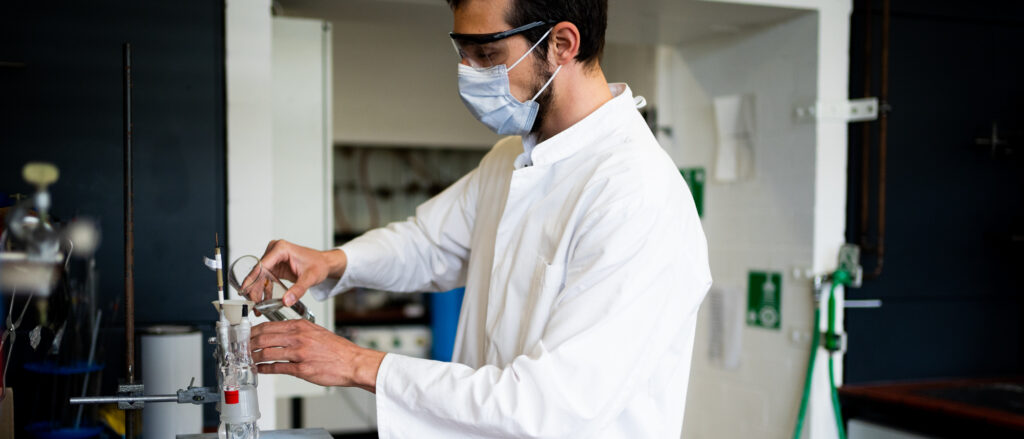TUMCS | Thomas Höfer | 18.03.2021
A new publication by Steffen, Stefanie and Filmon on reversible catalysis with hydrogenase has appeared in Nature Catalysis!

Steffen during the electrochemical measurement of a catalyst.
To ensure that electrocatalytic energy conversion functions efficiently, the reactions in a fuel cell must be reversible, i.e. high electric currents must flow with only minimal overpotential. We know that the enzyme hydrogenase is capable of this. However, electrodes must be coated with several layers of these biocatalysts in order to function efficiently. So-called redox-active films help to connect the catalyst to the electrode and to protect it. However, this has so far led to a loss of reversibility.
Steffen, Stefanie and Filmon have now developed an electrode with a redox-active polymer film (2.2′-viologen modified hydrogel) and a [FeFe]-hydrogenase, which enables bidirectional and reversible hydrogen conversion. The electrode shows high energy efficiency in the oxidation and reduction of hydrogen. In oxidation, it even works close to the thermodynamic maximum!
Further reading
Original publication
Hardt, S., Stapf, S., Filmon, D.T. et al. Reversible H2 oxidation and evolution by hydrogenase embedded in a redox polymer film. Nat Catal 4, 251–258 (2021). https://doi.org/10.1038/s41929-021-00586-1
